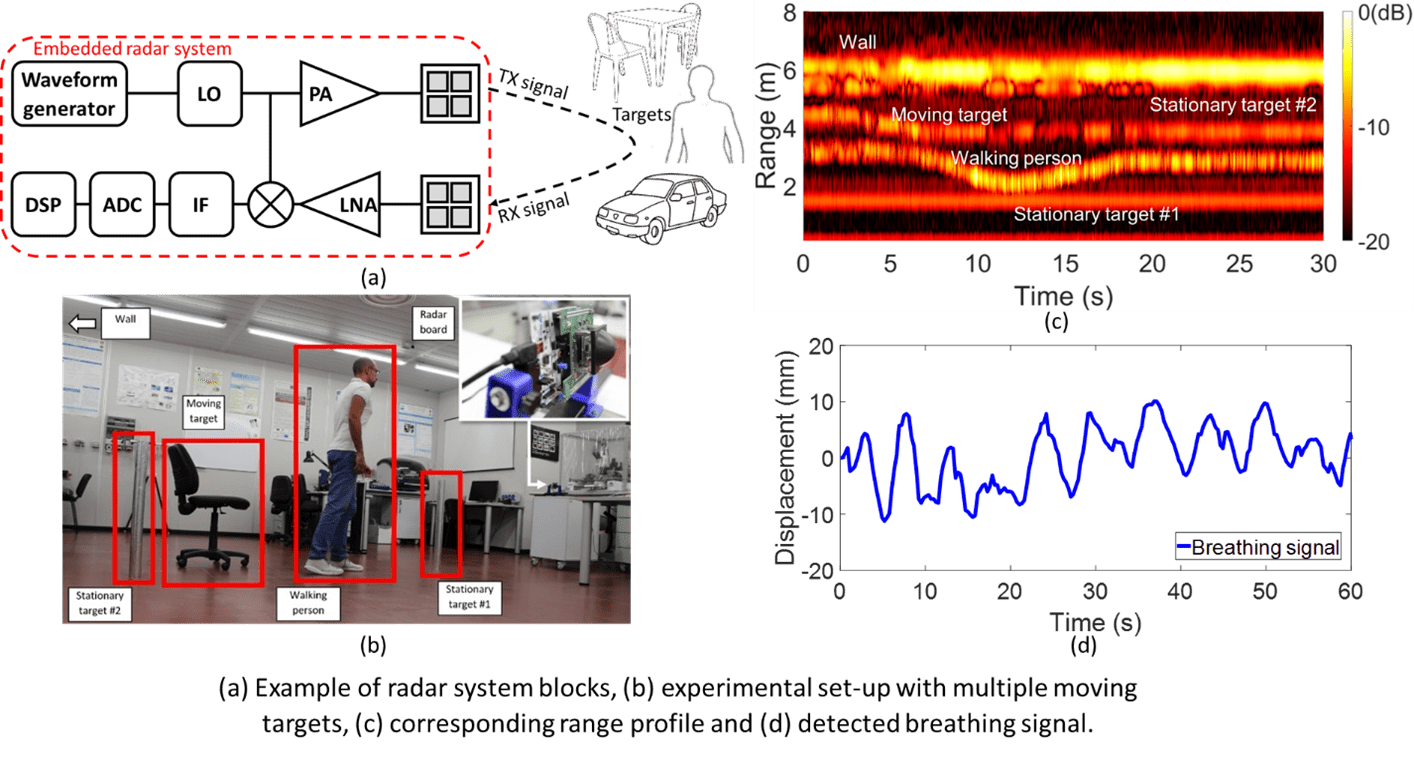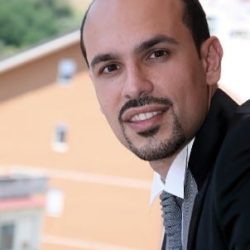Scope
In recent years, microwave and millimeter-wave radars are showing a disruptive impact in terms of reliability, operative performances, and multiplicity of provided sensing information.
Indeed, although the term radar is the acronym of “Radio Detection And Ranging”, the basic features have been widely extended and can be summarized as the capability to detect range, speed, angle-of-arrival (AoA) and millimeter/sub-millimeter displacements with high accuracy. Moreover, the radar sensing systems are characterized by absence of privacy concerns, decreasing size as the operating frequency increases, robustness against different ambient light and weather condition.
Both circuits and signal processing stages can be embedded in portable systems thus gaining interest for a wide range of industrial, automotive, medical, healthcare, human-computer interface, and internet of things (IoT) applications at the human-microwave frontier including:
- Activity sensing.
- Human localization.
- Non-contact vital sign detection.
- Gesture analysis.
- Structural health monitoring.
- Motion-based security monitoring.
- Land, naval, avionic and spaceborne radars.
- Automotive radars.
Microwave and millimeter-wave radar-based sensing is a hot research topic where the most popular operating modes and technologies are frequency-modulated continuous-wave (FMCW), frequency-shifting keying (FSK), interferometry, Doppler, ultrawideband (UWB), digital/RF beamforming, multiple-input multiple-output (MIMO), and synthetic aperture radar (SAR).

The aim of this Technical Committee is to represent a scientific hub where contributions, knowledge and expertise inputs from different academic and industry sectors are collected to create common efforts directed towards new innovative theories, technologies, techniques, and applications.
Bearing in mind that the growth of scientific community is fueled by people interaction along with sharing concepts and ideas, the organization of cutting-edge scientific, technical and educational events are also goals of this Technical Committee.

Chair
Emanuele Cardillo
Emanuele Cardillo received the MSc degree in Electronic Engineering from the University of Messina, Italy, and Ph.D degree from the University Mediterranea of Reggio Calabria, Italy, in 2013 and 2018, respectively. He is currently research fellow at the University of Messina.
His current research interests are focused on the microwave electronics field, mainly on compact radar systems for short-range applications, design of active and passive planar hybrid microwave integrated circuits (HMIC), linear and noise modeling of microwave field-effect transistors, linear and noise microwave measurements, realization of HMIC circuits and systems and nanosatellites.
He served as a member of the organizing committee of the International Workshop on Integrated Nonlinear Microwave and Millimetre-wave circuits (INMMIC 2015). He serves as a member of the scientific committee of the International Conference on Microelectronic, Devices and Technologies (MicDAT). He was the recipient of the “IEEE Sensors Journal Best Student Paper Award” (2017/2018) and of the “IEEE Microwave Theory and Techniques (MTT-S) award” (2018).